|
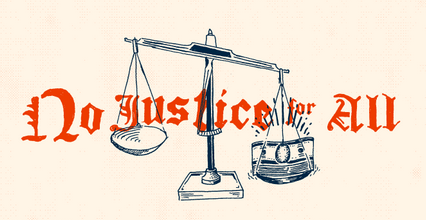
Click here to see a startling and informative Anti-Incarceration chart.
The Lectionary thanks Linda Yester for providing this chart.
ANTI-INCARCERATION/SOCIAL JUSTICE SUNDAY
CULTURAL RESOURCES
Sunday, July 21, 2013
Tyson-Lord J. Gray, Guest Cultural Resource Commentator
Ph.D. candidate in Ethics and Society at Vanderbilt University in Nashville, TN
Lection – Hebrew 13:3 (New Revised Standard Version)
I. The History/Historical Documents Section
In 2004 Dorothy E. Roberts published the article “The Social and Moral Cost of Mass Incarceration in African American Communities” in the Stanford Law Review.1 In this article Roberts points out how changes in crime control and sentencing policies led to an unprecedented buildup of the United States prison population from the 1990s to the beginning of the twenty-first century. Consequently, by the end of 2002 imprisonment rates were five times higher than in 1972 and the number of inmates in the nation’s jails and prisons exceeded two million.
Interestingly, this extraordinary prison expansion included young black men in grossly disproportionate numbers. Roberts notes that on any given day, nearly one-third of black men in their twenties are under the supervision of the criminal justice system, either behind bars, on probation, or on parole. This development resulted in what is most accurately characterized as mass incarceration of African Americans.
It was the Sentencing Project which first alerted the public to this alarming aspect of incarceration in the report “Young Black Men and the Criminal Justice System: A Growing National Problem,” issued in 1990. It revealed that almost one in four black men in the United States between the ages of twenty and twenty-nine were under control of the criminal justice system. By 1995, the Sentencing Project reported that the number had risen to one in three. This number is drastically higher than those of whites, and blacks are eight times more likely to spend time behind prison bars than whites.
Roberts further indicates that the War on Drugs is responsible for this level of black incarceration. This aggressive street-level enforcement of drug laws and harsh sentences for drug offenders began in the 1990s and became its own prison-generating machine, producing incarceration rates that continued to grow even as the national crime rate decreased. Again, the population affected most by this campaign was predominately young African American men, although whites have a higher rate of illegal drug use.
Today the affects of this campaign are still visible as the United States has the highest number of nonviolent prisoners than any other nation. Ohio State University law professor and civil rights activist Michelle Alexander points out in her book, The New Jim Crow: Mass Incarceration in the Age of Colorblindness,2 that there are more black men behind bars or under the watch of the criminal justice system today than there were enslaved in 1850. Alexander wrote in a 2010 Huffington Post blog3 that more African American men were disenfranchised due to felony convictions in 2004 than in 1870, “the year the Fifteenth Amendment was ratified prohibiting laws that explicitly deny the right to vote on the basis of race.” She contends that the War on Drugs is a big part of the reason that a black child born today is less likely to be raised by both parents than a black child born during slavery.
II. Biographical Reflections
Often the prison industry demonizes inmates as criminals, murders, and rapists. Yet, this characterization fails to take into account the numerous inmates who are imprisoned on nonviolent charges as well as those who are not guilty. According to the Innocence Project, an organization founded in 1992 to assist prisoners who could be proven innocent through DNA testing, more than 300 people in the United States have been exonerated in DNA testing, including 18 who served time on death row. Additionally, it should always be remembered that laws are man-made, thus imprisonment alone is not an indication that an individual has committed a wrong.
On April 12, 1963, city officials issued a court injunction to prohibit the civil rights marches that were going on in Birmingham, Alabama. Refusing to be intimidated by these efforts, Dr. Martin Luther King Jr. still led a peaceful march through the city of Alabama in protest of segregation. Consequently, he was arrested and jailed for eight days. During this time, King wrote the famous “Letter From a Birmingham Jail” on toilet paper and the sides of the newspaper to answer a letter he had received from a priest. Within this letter, King acknowledges that he is jailed for disobeying the law, however he quotes St. Augustine when he says, “An unjust law is no law at all.”
In lieu of passing judgment on prison inmates then, one should attempt to understand the situation and circumstances that have led to an individual’s incarceration. As in the case with Dr. King, he was in Birmingham not for his own benefit, but because of the injustice being committed against sanitation workers. As King stood in solidarity with these workers, he himself was wrongly imprisoned. Nevertheless, he went on to write, “An injustice anywhere is a threat to justice everywhere.”
Reflecting upon King’s words one must ask oneself, what laws have encouraged and increased minority incarceration in America? How have individuals been prejudged and treated unjustly within the prison industrial complex? How are individuals further ostracized when released from prison with criminal records? And how can we stand in solidarity with those who are imprisoned? This may include fighting for those who have been treated unjustly, as with the Innocence Project, or standing in solidarity against injustice as with the example set by Dr. King.
III. The LaMonte Armstrong Story
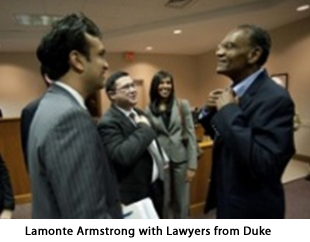 On July 12, 1988, the body of Ernestine Compton was discovered in her home. She had been stabbed and strangled with an electrical cord. A longtime faculty member at North Carolina A&T University, Compton was a fixture in her Greensboro neighborhood. She was also friends with LaMonte Armstrong’s mother, who lived down the street, and knew LaMonte Armstrong from the neighborhood and from his time as a student at A&T, where he graduated in 1975. At the time of her death, Armstrong had known Compton for more than two decades—from his childhood, through his early career as a teacher in Guilford County Public Schools, and during his eventual slide into heroin addiction. There was never any physical evidence linking Armstrong to the crime, Newman said. He became a focus of the police investigation after a Crime Stoppers tip. On July 12, 1988, the body of Ernestine Compton was discovered in her home. She had been stabbed and strangled with an electrical cord. A longtime faculty member at North Carolina A&T University, Compton was a fixture in her Greensboro neighborhood. She was also friends with LaMonte Armstrong’s mother, who lived down the street, and knew LaMonte Armstrong from the neighborhood and from his time as a student at A&T, where he graduated in 1975. At the time of her death, Armstrong had known Compton for more than two decades—from his childhood, through his early career as a teacher in Guilford County Public Schools, and during his eventual slide into heroin addiction. There was never any physical evidence linking Armstrong to the crime, Newman said. He became a focus of the police investigation after a Crime Stoppers tip.
During the initial investigation, Armstrong was intermittently interviewed by police and recorded by a police informant. He never gave information indicating any knowledge of the crime, even after prompting by the informant. As a result, the police abandoned Armstrong as a suspect, and the investigation languished. Six years later, the informant was himself charged with the murder; at trial, he testified against Armstrong and pleaded guilty to a much lesser offense. Based on the testimony of that informant, who later recanted and admitted that he testified to avoid the murder charge, Armstrong was convicted of first-degree murder in 1995 and sentenced to life in prison.
Armstrong’s case was referred to the Duke Law Innocence Project by the North Carolina Center on Actual Innocence.4 As students investigated the case, the District Attorney’s office and the Greensboro Police Department gradually opened their files and eventually took an interest. Natasha Alladina and Matthew McGee worked with Greensboro Detective Michael Matthews and reviewed the entire case file. The file contained recordings involving the informant that strongly indicated Armstrong’s innocence and witness statements from people who saw Compton alive after the state claimed at trial that Armstrong killed her. None of the recordings and documents had been turned over to Armstrong’s trial attorney. These and other facts strongly pointing to Armstrong’s innocence persuaded Theresa Newman, a professor at Duke Law School and co-director of the school’s Wrongful Convictions Clinic Newman, who primarily supervised the clinic’s investigation, to begin drafting a motion requesting a new trial.
The clinic enlisted David Pishko, a Winston-Salem attorney who has worked with the clinic on other wrongful conviction cases, to assist in the hoped-for hearing on the motion. Much of the motion rested on the lack of evidence against Armstrong, the impeachability of the police informant, and the evidence never given to his original attorneys. “I had personally given up hope of the physical evidence being helpful,” McGee said. “None of it ever implicated LaMonte, but none of it ever helped prove he was innocent, either.” But then Newman got a call indicating that they had retested some of the physical evidence from the crime scene, and they got a hit. A palm print positioned on the wall right over Ms. Compton’s body had never been identified. Now, because they were using a new database and because that database was gradually being populated with new information, they ran the print and got a match. As a result, they received a new hearing of the case.
Upon hearing the evidence of LaMonte Armstrong’s wrongful conviction presented by defense attorneys David Pishko and Theresa Newman, Judge Joseph Turner released Armstrong from prison on July 29, 2012 after serving 17 years for a crime he didn’t commit. He was 62 years old!
IV. Additional Stories of Wrongful Incarceration
V. Quotes
- “Under a government which imprisons any unjustly, the true place for a just man is also a prison.” —Henry David Thoreau
- “To assert in any case that a man must be absolutely cut off from society because he is absolutely evil amounts to saying that society is absolutely good, and no-one in his right mind will believe this today.” —Albert Camus
- “He who opens a school door, closes a prison door.” —Victor Hugo
- “America is the greatest nation ever founded. The ideals are the greatest ever espoused in human history, and we just need the country to live up to them. But what I worry about are the 1 million black men in the prison system.” —Henry Louis Gates
- “I just think it’s shocking how many of these young people wind up in prison and they get turned into hardcore criminals because they had a possession of a very small amount of a controlled substance.” —Evangelist Pat Robertson
VI. Songs That Speak to the Moment
Written in 1929, “I’ll Fly Away” is a hymn by Albert E. Brumley and has been described as “The Prisoner’s Song” due to its message of desire for release from captivity. Frequently recorded as a gospel song, it has also been recorded by secular artists. Whether applying to prison or earthly existence, “I’ll Fly Away” provides an apt metaphor for those suffering from imprisonment and desiring freedom.
I’ll Fly Away
by Albert E. Brumley
Some bright morning when this life is over I’ll fly away
To that home on God’s celestial shore I’ll fly away
I’ll fly away oh glory
I’ll fly away (in the morning)
When I die hallelujah by and by
I’ll fly away
When the shadows of this life have gone I’ll fly away
Like a bird from these prison walls I’ll fly I’ll fly away
Oh how glad and happy when we meet I’ll fly away
No more cold iron shackles on my feet I’ll fly away
Just a few more weary days and then I’ll fly away
To a land where joys will never end I’ll fly away5
Pastor and recording artist Rev. Milton Brunson was a chart-topping, Grammy-winning gospel singer. In 1991, with the Thompson Community Choir, he released the album Available to You, which included the song “I’m Free.” An instant chart-topping success, “I’m Free” speaks of being free from chains of bondage and oppression.
I’m Free
by Milton Brunson
I’m free
Praise the Lord, I’m free
No longer bound
No more chains holding me
My soul is resting
It’s just a blessing
Praise the Lord, hallelujah, I’m free6
The song “We Shall Overcome” is derived from the Charles Tindley gospel song, “I’ll Overcome Some Day.” During the Civil Rights Movement, this song was adapted by changing the “I” to “We” and was often used as a means of unity and affirmation in the fight for Civil Rights. These songs were often deployed during rallies, prayer meetings, and imprisonment. The lyrics speak not only of the desire to overcome adversity but also of the power of unity among those who stand in solidarity with the oppressed.
We Shall Overcome
We shall overcome, we shall overcome,
We shall overcome someday;
Oh, deep in my heart, I do believe,
We shall overcome someday.
The Lord will see us through, The Lord will see us through,
The Lord will see us through someday;
Oh, deep in my heart, I do believe,
We shall overcome someday.
We’re on to victory, We’re on to victory,
We’re on to victory someday;
Oh, deep in my heart, I do believe,
We’re on to victory someday.
We’ll walk hand in hand, we’ll walk hand in hand,
We’ll walk hand in hand someday;
Oh, deep in my heart, I do believe,
We’ll walk hand in hand someday.
We are not afraid, we are not afraid,
We are not afraid today;
Oh, deep in my heart, I do believe,
We are not afraid today.
The truth shall make us free, the truth shall make us free,
The truth shall make us free someday;
Oh, deep in my heart, I do believe,
The truth shall make us free someday.
We shall live in peace, we shall live in peace,
We shall live in peace someday;
Oh, deep in my heart, I do believe,
We shall live in peace someday.7
VII. Making This a Memorable Learning Moment
- UC Books to Prisoners is an Urbana Illinois-based project, which provides books to Illinois inmates at no cost by mail as well as through two county jail libraries. This community-based volunteer organization also provided the opportunity for volunteers to interact with inmates by reading their letters, selecting books from the collection of donated materials, and shipping books to inmates. To obtain information regarding how their program operates and the potential for starting your own local “books to prisoner” program, visit their website at www.books2prisoners.org.
- The Prison Policy Initiative was founded in 2001 by Peter Wagner, Stephen Healy, and Sarah Kowalski. They document the impact of mass incarceration on individuals, communities, and the national welfare in order to empower the public to improve criminal justice policy. The main focus of the organization is to end prison-based gerrymandering, the distortion of the democratic process caused by the Census Bureau’s practice of counting people where they are confined, not where they come from. They have also exposed injustices in the prison phone industry, sentencing enhancement zones, and sex offender banishment. For more info visit www.prisonpolicy.org.
- The Center for Church and Prison, Inc. is a resource and research center working towards community revitalization through prison reform and strategic solution development and intervention in the high rate of incarceration and recidivism. This organization, founded by Rev. Dr. George Walters-Sleyon, focuses on respect, reform, rehabilitation, and restoration. For more info visit www.churchandprison.org.
VIII.
Audio Visual Aids
To aid in heaping hearers remember the morning sermon and the message of this text, preachers may want to incorporate:
- Images of inmates or prisons on church screens or in their bulletins;
- Graphs of statistics showing the disproportionate rates of black male incarceration or the number of blacks and Latinos incarcerated compared to white men and women.
- Clips from movies such as Conviction,the true life story of a single mother who goes back to law school in order to prove that her brother did not commit the crime he was convicted of. After 18 years, his sentence is overturned and he is freed from prison.
- Clips from movies such as Les Miserables,a story by Victor Hugo that tells of the ex-convict Jean Valjean, who after escaping prison becomes a force of good in the world but who cannot escape the penalty and punishment of his past.
IX. Books
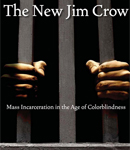 |
Alexander, Michelle. The New Jim Crow: Mass Incarceration in the Age of Colorblindness. New York, NY: The New Press, 2012. |
|
|
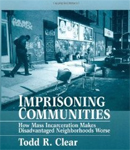 |
Clear, Todd R. Imprisoning Communities: How Mass Incarceration Makes Disadvantaged Neighborhoods Worse. New York, NY: Oxford University Press, 2007. |
|
|
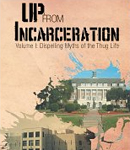 |
Dixon, Anthony. Up From Incarceration: Volume I: Dispelling Myths of the Thug Life. Philadelphia, PA: Xlibris, 2013. |
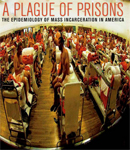 |
Drucker, Ernest. A Plague of Prisons: The Epidemiology of Mass Incarceration in America. New York, NY: The New Press, 2011. |
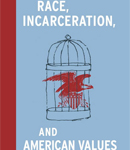 |
Loury, Glenn. Race, Incarceration, and American Values. Boston, MA: Massachusetts Institute of Technology, 2008. |
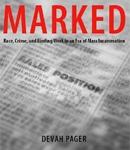 |
Pager, Devah. Marked: Race, Crime, and Finding Work in and Era of Mass Incarceration. Chicago, IL: The University of Chicago Press, 2007. |
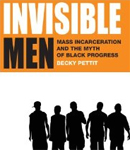 |
Pettit, Becky. Invisible Men: Mass Incarceration and the Myth of Black Progress. New York, NY: Russell Sage Foundation Publications, 2012. |
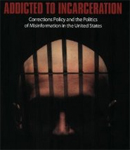 |
Pratt, Travis. Addicted to Incarceration: Corrections Policies and the Politics of Misinformation in the United States. Washington, DC: Sage Publications, 2008. |
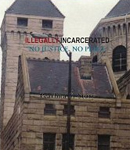 |
Story, Pearlina. Illegally Incarcerated: No Justice, No Peace. Philadelphia, PA: Xlibris, 2010. |
Notes
1. Roberts, Dorothy. “The Social and Moral Cost of Mass Incarceration in African American Communities.” Sanford Law Review Vol. 56, No. 5, Apr. 2004. pp. 1271–1305.
2. Alexander, Michelle. The New Jim Crow: Mass Incarceration in the Age of Colorblindness. New York, NY: New Press, 2010.
3. Alexander, Michelle. “Where Have All the Black Men Gone?” Huffington Post Feb. 22, 2010. www.huffingtonpost.com/michelle-alexander/where-have-all-the-black_b_469808.html
4. “Duke Law Faculty, Alumni, and Students Secure Release, New Trial, for LaMonte Armstrong,” Duke Law News July 10, 2012. www.law.duke.edu
5. “I’ll Fly Away.” By Albert E. Brumley. African American Heritage Hymnal. Chicago, IL: GIA Publications, 2001. #601
6. “I’m Free.” By Milton Brunson. Available to You. New York, NY: Sony, 1991.
7. “We Shall Overcome.” Negro spiritual. African American Heritage Hymnal. #542
|